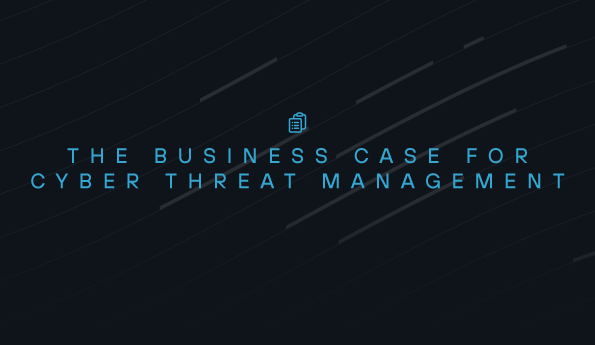Malware vs. Ransomware vs. Living-Off-the-Land: Comparing Cyber Threats
Malicious actors are constantly developing new tactics to exploit vulnerabilities and compromise the security of individuals and organizations. Among these threats, malware, ransomware, and living-off-the-land techniques have gained considerable attention. In this blog, we will delve into the characteristics, impacts, and prevention strategies related to malware, ransomware, and living-off-the-land (LoL).
What is malware?
Malware, short for malicious software, is an umbrella term for various types of harmful software designed to infiltrate systems without the user's consent. Malware can take the form of viruses, worms, Trojans, or spyware, each with its own unique characteristics.
The primary goals of malware are to gain unauthorized access to data, disrupt operations, or even gain control over an entire system. Malware often spreads through infected email attachments, malicious advertisements and webpages, or between infected devices. To protect against malware, it is essential to use up-to-date, next-gen antivirus software, regularly update operating systems and applications, and exercise caution while interacting with unknown sources online.
Anyone can be the target of a malware attack, so it's important to always have the right measures in place to defend against the possibility. There are many different types of malware. One such kind is ransomware.
What is ransomware?
Ransomware is a type of malware that has gained significant notoriety in recent years. Unlike other types of malware, ransomware does not focus on destroying data, but instead exfiltrates and holds it hostage, either encrypting files on the victim's system or offloading it to their own servers. Attackers demand a ransom, usually in cryptocurrency, in exchange for either the decryption key or a promise not to release stolen data. Given the nature of the files stolen, attackers may extort organizations through incriminating or otherwise shameful emails, as well as just general mission-critical data to instigate a ransom payment.
Ransomware attacks can have severe consequences for individuals and organizations, leading to financial losses, reputational damage, and operational disruptions. Mitigating the risk of ransomware requires a multi-layered approach, including regular data backups, robust security measures, user education, and the use of behavior-based threat detection systems through an endpoint security solution. Another key layer for mitigating the spread of ransomware is the implementation of network micro segmentation to limit lateral movement to other systems and data stores.
Given the prevalence of ransomware, anyone can be a target. Some known examples of ransomware include LockBit, NotPetya, WannaCry, Conti, and more. Most governments recommend that targeted organizations do not pay ransoms, which does not guarantee faster recovery of encrypted data.
What is living-off-the-land?
Living off the land, or LoL, is a technique employed by cybercriminals to remain undetected by leveraging legitimate tools and processes already present in a targeted system. Rather than relying on external malicious software, LoL attackers exploit native system utilities, administration tools, and scripting languages to carry out their activities. In some cases, LoL attacks are fileless; they use a system’s memory instead of its hard drive to attack without leaving any artifacts. By using trusted tools, they aim to evade detection by security solutions that primarily focus on identifying known malware signatures. Once on the system, attacks perpetrated through LoL can then deploy malware, ransomware, or other payloads to infect the system.
LoL attacks can be challenging to detect and mitigate, as they exploit the very tools intended to facilitate system management. Implementing security best practices such as privilege management, application whitelisting, and monitoring for suspicious activities can help detect and prevent LoL attacks. Today's top endpoint security solutions can also help mitigate in-progress LoL attacks.
Recently, LoL attacks have gained popularity among threat actors, as they are usually harder to detect and can go unnoticed in an environment for months or even years. Often, these attacks can use pre-existing system tools like PowerShell, which makes them even harder to detect. Defending against these types of attacks requires sophisticated endpoint security software that blocks script logging altogether.
Defending against malware, ransomware, and LoL attacks
As the cyber threat landscape continues to evolve, it is crucial to understand the nuances and implications of various attack vectors. Malware, ransomware, and living-off-the-land techniques represent some of the most popular approaches employed by cybercriminals to exploit vulnerabilities and compromise digital systems.
Protecting against these threats requires a proactive and multi-faceted approach, including robust security measures, regular updates and patching, user education, and the implementation of behavior-based detection systems. Modern advances in artificial intelligence and machine learning technologies have allowed for these types of solutions to be used effectively by businesses of all sizes.
More specifically, organizations can employ endpoint security solutions, especially those integrated within an all-in-one security platform to defend against malware, ransomware, LoL, and other prominent attacks. Doing so promotes a defense-in-depth approach to cybersecurity, which leverages layers of protective solutions to detect, remediate, and prevent attacks.
To learn more about how endpoint solutions support a defense-in-depth approach, download our eBook today. In it, you'll find how endpoint solutions defend against malware, ransomware, and LoL attacks as well as how to find the best solution for your organization.
See Todyl in Action
Learn how you can protect what you built.
Stay on the Cutting Edge of Security
Subscribe to our newsletter to get our latest insights.



